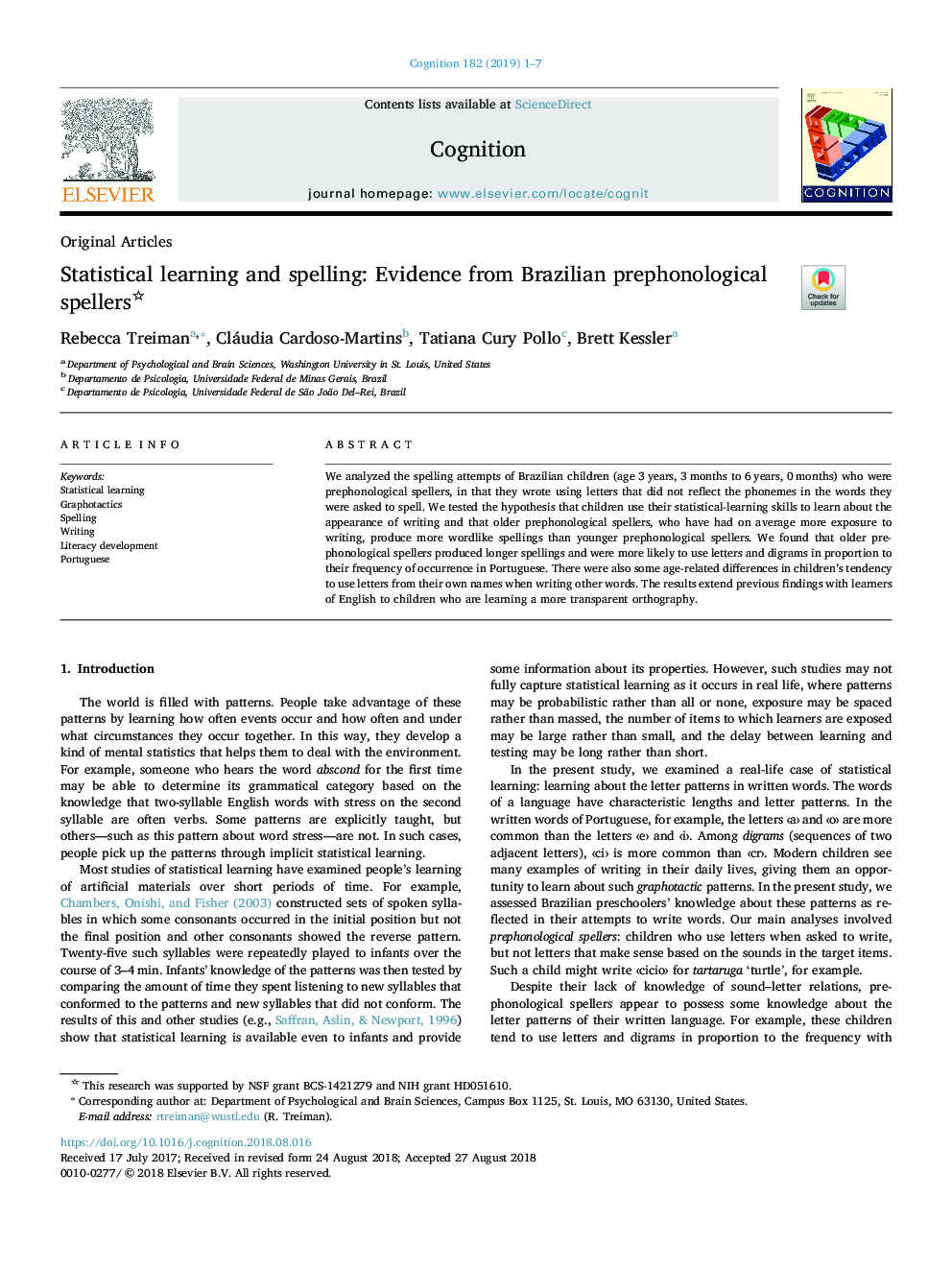| Article ID | Journal | Published Year | Pages | File Type |
|---|---|---|---|---|
| 10147035 | Cognition | 2019 | 7 Pages |
Abstract
We analyzed the spelling attempts of Brazilian children (age 3â¯years, 3â¯months to 6â¯years, 0â¯months) who were prephonological spellers, in that they wrote using letters that did not reflect the phonemes in the words they were asked to spell. We tested the hypothesis that children use their statistical-learning skills to learn about the appearance of writing and that older prephonological spellers, who have had on average more exposure to writing, produce more wordlike spellings than younger prephonological spellers. We found that older prephonological spellers produced longer spellings and were more likely to use letters and digrams in proportion to their frequency of occurrence in Portuguese. There were also some age-related differences in children's tendency to use letters from their own names when writing other words. The results extend previous findings with learners of English to children who are learning a more transparent orthography.
Related Topics
Life Sciences
Neuroscience
Cognitive Neuroscience
Authors
Rebecca Treiman, Cláudia Cardoso-Martins, Tatiana Cury Pollo, Brett Kessler,
